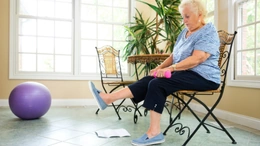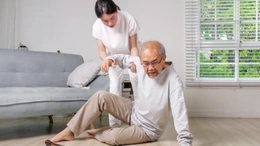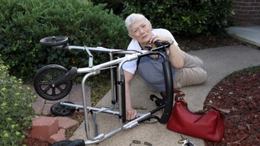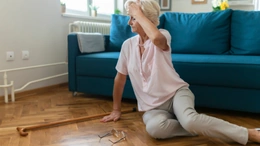Where And How To Install A Carbon Monoxide Alarm In Senior Homes
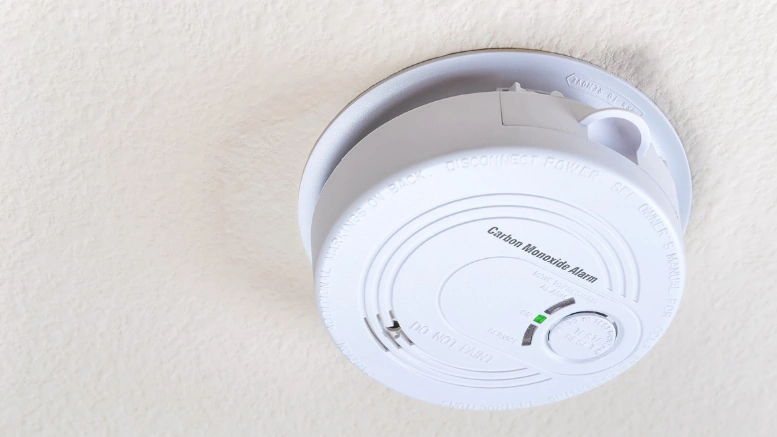
Carbon monoxide (CO) is a silent but deadly menace. It doesn't have a scent or color, but it is extremely poisonous and can be fatal.
The elderly are particularly vulnerable since they don't even know they've been poisoned initially. That is why carbon monoxide detectors are a necessity in every elderly home. The right ones, when installed properly, can save lives from this toxic pollutant.
This blog will clearly elucidate and educate on where and how to install carbon monoxide detectors in senior residences to protect older adults.
Best Practices For Installing Carbon Monoxide Detectors In Senior Living Spaces
Besides being placed in the right spot, carbon monoxide alarms must also be correctly installed to safeguard seniors effectively. In fact, it is important for the ambiance to be a fire-safe environment where the carbon monoxide detectors are placed to avoid any mishaps. Here, we will share the best location as well as the correct method of installing it.
Where To Place Carbon Monoxide Detectors?
Position carbon monoxide detectors where seniors spend most of their time. The most critical one is outside every sleeping area.
This way, in the event carbon monoxide builds up in the air overnight, it will alarm and wake up the occupants. If it is a multi-level house, it must be equipped with at least one detector per floor.
Detectors are also suggested for any devices that produce carbon monoxide, including attached garages, fireplaces, and gas furnaces. However, be careful not to place them too close to devices to avoid false alarms. The best position is around 15 feet away from fuel-burning appliances.
In terms of installation, carbon monoxide detectors can be installed either on the ceiling or on a wall. Other than the fact that since carbon monoxide blends uniformly with air, the precise height is not as important as it is for smoke alarms. But they must never be installed near air vents, windows, or areas that are high in humidity, like a bathroom.
Where To Install Carbon Monoxide Alerts
A carbon monoxide alert is easy to install. Many models are battery-powered and don't require wiring. You can install them using the screws or adhesive tapes provided in the package. It is crucial to observe the manufacturer's instructions for both types.
Battery-powered alarms are ideal for houses with elderly people, and the simplicity of installation and portability enable easy placement when an alarm is required.
Generally, hardwired alarms are plugged directly into the electrical system in your home and are a more permanent installation. These may be the best choice for assisted living residence areas.
Hardwired installations must be performed by a licensed electrician to ensure safety and compliance with local building codes.
Combining CO Alarms With Smoke Detectors
There are also alarms designed specifically to detect both smoke and CO. They're compact and convenient to handle. They're ideal for small-space assisted care facilities where multiple elderly residents stay.
If a combination alarm is utilized, it must still be installed according to the recommendations for smoke and CO detection. This also means not placing it in the kitchen or bathrooms because steam and cooking fumes cause false alarms.
Essential Safety Tips When Installing CO Alarms In Senior Homes
Carbon monoxide detectors are only the first step. There are a few things to do to make them safe for elderly residents. Here are a few of the most important considerations.
Accessibility
When choosing and installing carbon monoxide alarms in older person homes, accessibility is important. It must be sufficiently loud so that even someone who is hard of hearing can hear it easily.
Older persons with hearing loss might not wake up from normal alarm sounds. To them, strobing light or vibration pad alarms connected to beds may be more effective.
Moreover, the placement of the alarm should be close to where it can easily be reached by elderly people, so they won't have to stretch, stoop, or climb up something to activate it. This aspect is avoiding falls or injuries while testing or maintaining it.
Maintenance And Testing
Even the most effective alarm won't do any good if it doesn't function. Carbon monoxide detectors need periodic testing to determine if they're functioning correctly.
Some alarms have a test button that should be activated every month. For caregivers or seniors, they can just listen for the loud beeping, which confirms the system is functioning.
Change batteries as directed. Usually, once a year is recommended so that the functioning of the CO detectors is not deterred.
Newer alarms sometimes come with 10-year batteries that need less frequent attention. In either situation, the device should be retired after its expiration date, typically 7–10 years from the date of manufacture.
It's also important to keep the alarm clean. Dust may coat the sensors, so every now and then, a soft wipe with a dry cloth will keep them in order. Do not paint alarms or encase alarms, since this can affect how they function.
Educating Caregivers And Residents
Any alarm is only as effective as you are at knowing what to do when you hear it. And that is why it is so vital to have education in senior facilities.
Residents need to learn what the alarm sounds like and what it means. Caregivers need to be taught to do so quickly as well: fling open windows, shut down appliances, exit the space, and summon assistance.
Placing emergency contact information on or near telephones or in public areas also works. Authorities may also place directions in big, bold print on walls so seniors and staff can see and execute the directions during emergencies.
If you are able, you should practice drills once or twice a year, similar to fire drills, to make sure all people are prepared in case you need to seek shelter.
Conclusion
Carbon monoxide detectors save lives, especially if you have elderly people in your house. Accurate positioning, installation and periodic servicing are essential.
When individuals know what to do, these alarms provide people with peace of mind and offer actual protection. Keep the people you love safe; test your home for carbon monoxide detectors and install them today.






